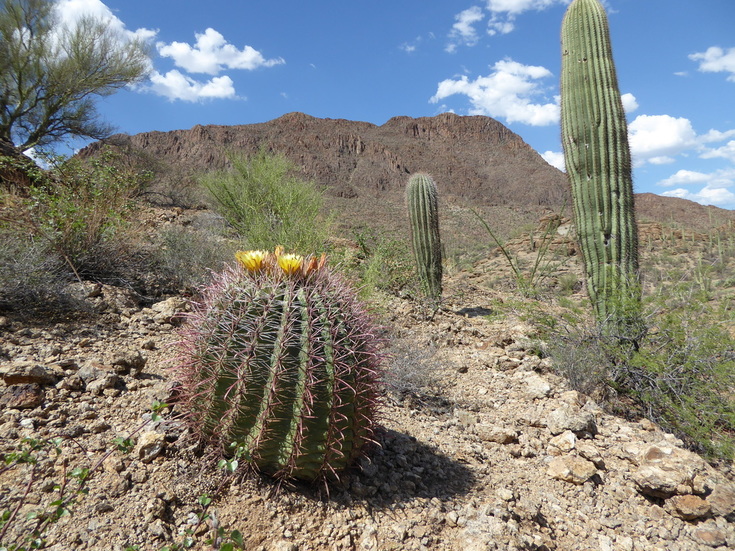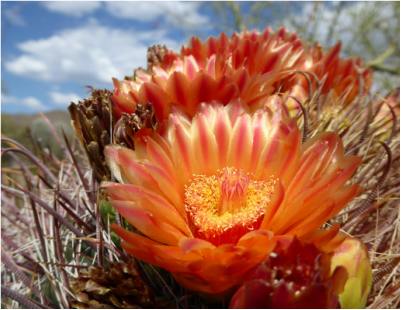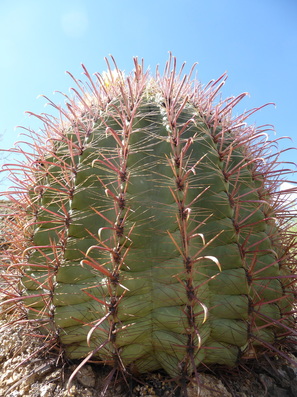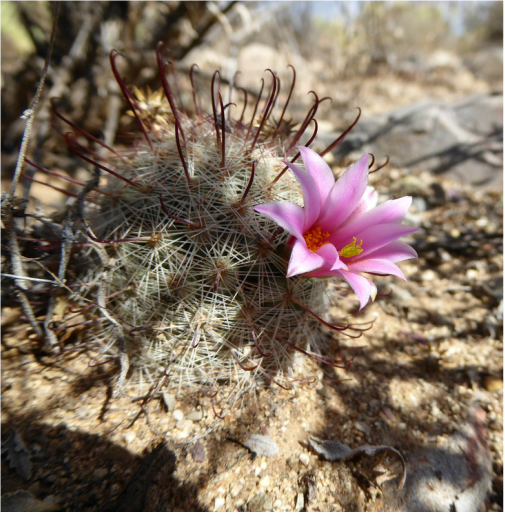hold the green chlorophyll necessary for photosynthesis; everything is armed with a fierce covering of thorns or spines, and nothing creeps along the baking ground. Cacti are iconic examples of this adaptation to a desert environment and a number of species are particular to the Sonoran desert of Arizona, and arid southwestern US/northwestern USA, including the barrel cacti (genus: Ferocactus; literally "ferocious cactus"!) a group of about 30 species that grow in a characteristic squat barrel-like shape. Their leaves have been modified into sharp curved hooks that grow in rows down ridges on the plant. Defense is particularly important in an environment where replacing lost resources is difficult, and in addition to their wicked hooks barrel cacti produce nectar from modified spines along the ridges to attract ants which provide extra defense against anything that may somehow get beyond the layer of spines. The ridges themselves allow the cactus to expand as it absorbs water when it rains or contract as it dries out in the longer periods between drinks. Interestingly (to me) the relationships and distinctness of species within this group are poorly understood, and it appears that some species currently thought to be Ferocactus may actually be more closely related to other cacti (Hernandez-Hernandez et. al., 2010). Even within Ferocactus morphology and genetics fail to conclusively establish a reliable family tree and telling species apart in the field can be difficult. I am not sure if what I thought were two species at the time were indeed different: Ferocactus wislizeni typically has orange/red flowers (above) and F. cylindracious has typically yellow flowers (at top) but both species can sometimes be found with the other color (is this convergent evolution of both flower colors or could it be species swapping genes and flower color by interbreeding?). Unsurprisingly for groups of plants that are hard to tell apart, molecular data suggests that the whole group are a very recent radiation, having all differentiated from a common ancestor not long ago (about 5 million years (Vazquez-Sanchez et. al., 2013)), giving little time for obvious reliable differences to occur between species. More intriguingly is that even in the short time I was there I saw several "species" growing in amongst each other; How species arise (grow apart from a common ancestor) in a short space of time and with limited spatial or environmental separation are questions that continue to fascinate and amuse many biologists, like myself.
Hernandez-Hernandez et. al., 2010; Phylogenetic relationships and evolution of growth form in Cactaceae (Caryophyllales, Eudicotyledoneae); American Journal of Botany, 98(1)
Vazquez-Sanchez et. al., 2013; Molecular phylogeny, origin and taxonomic implications of the tribe Cacteae (Cactaceae); Systematics and Biodiversity, 11(1)
0 Comments
|
Bort Edwards




 RSS Feed
RSS Feed
